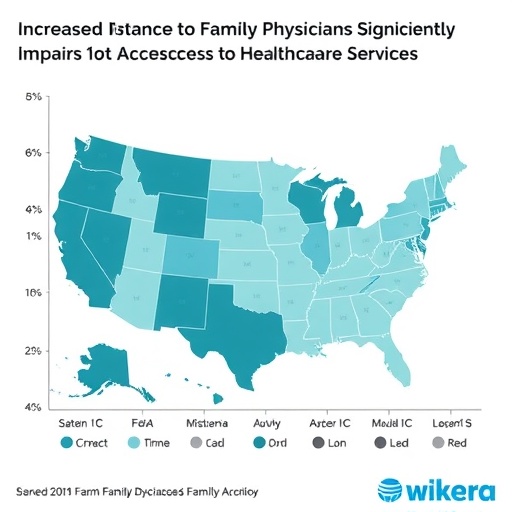
The rise of telehealth has become particularly prominent over the past few years, showcasing its potential to transform how healthcare is accessed and delivered. Recent findings reveal a stark disparity in telehealth utilization for substance use disorder treatment among various insurance groups. Research shows that individuals enrolled in Medicare Advantage and those with commercial insurance have embraced telehealth services at a much higher rate compared to their Medicaid counterparts. This discrepancy highlights ongoing equity challenges within the healthcare system, particularly for the most vulnerable populations.
Medicare Advantage beneficiaries have experienced a continuous increase in their engagement with telehealth for substance use disorder treatment (SUDT). These patients have reported a higher likelihood of utilizing telehealth services, which has led to an overall increase in their access to necessary medical support. This uptick may be attributed to the expansive telehealth policies implemented during the public health emergency, which facilitated easier access to care for these individuals. The flexibility and convenience offered by telehealth appear to have removed barriers that traditionally prevented these patients from seeking treatment.
However, the situation looks quite different for individuals covered under Medicaid. Instead of experiencing an increase, the utilization of telehealth services for SUDT among Medicaid recipients has actually declined over the same period. This trend raises questions about the accessibility and availability of telehealth services for lower-income populations, who may face unique barriers such as limited internet access, lack of technological proficiency, or unexpected expenses tied to online consultations. The neglect of Medicaid beneficiaries in telehealth SUDT utilization paints a concerning picture of healthcare equity, where the most necessary services become less available to those who require them the most.
The research also highlights the geographical disparities in telehealth usage. Rural populations, in some instances, have benefited from telehealth advancements. Reports indicate that rural individuals experienced a growth in SUDT services throughout the public health emergency, diverging from the experiences of urban populations. This increase suggests that telehealth has the potential to bridge gaps in healthcare access for those living in remote areas, offering them an avenue to obtain vital services without the need for long-distance travel.
The concept of telehealth has evolved significantly over time, particularly during the global health crisis exacerbated by the COVID-19 pandemic. The initial hesitancy among healthcare providers and patients has largely dissipated, paving the way for a more widespread acceptance of virtual care. As practitioners become more experienced and comfortable with telehealth technology, patient outcomes may improve, making telehealth an essential component of modern medicine.
Equity in healthcare calls for urgent attention, considering the disparities that have emerged. Policy-makers and healthcare providers must work collaboratively to identify and address barriers facing Medicaid populations. Efforts could include enhancing technological infrastructure, offering more comprehensive training for both patients and providers, and implementing outreach initiatives aimed specifically at marginalized communities.
In conclusion, the findings presented in this recent study serve as a crucial reminder of both the advancements in telehealth and the inequities that still persist. It urges healthcare stakeholders to not only celebrate the increased access afforded to some but also to reassess the systemic issues that hinder others from similar benefits. Understanding and addressing these inequities must remain at the forefront of healthcare reform to ensure that all populations, regardless of insurance status, are able to access vital care through telehealth platforms.
The momentum surrounding telehealth’s potential to reshape healthcare services holds promise, but with it comes the responsibility to optimize access and quality of care for all individuals. Only then can we truly harness the transformative power of telehealth and mitigate existing disparities, ensuring that no group is left behind in the evolving landscape of healthcare.
As healthcare continues to adapt to a digital-first approach, the importance of creating inclusive frameworks becomes even more crucial. The emphasis must remain on designing policies that promote equitable access and address the unique challenges encountered by underserved populations. Only by doing so can we foster a healthcare environment that upholds the dignity and needs of every individual.
Through sustained advocacy and collaborative efforts among healthcare providers, payers, and community organizations, the healthcare landscape can shift toward greater equality, ensuring that all individuals have equal opportunities to receive the care they need in a timely and effective manner.
To fully grasp the implications of this study, further research is necessary to understand the nuances behind these disparities, including an exploration of the experiences and challenges faced by Medicaid beneficiaries. Such an inquiry will be essential in informing future policies and practices aimed at improving health outcomes for all populations.
Lastly, the ongoing discourse around telehealth must not only center on its advantages in isolation but also critically analyze who benefits most from these innovations and who remains at risk of exclusion. The path ahead must be navigated carefully, balancing the enthusiasm for technological advancements with a steadfast commitment to equity in healthcare access.
Subject of Research: Telehealth Utilization for Substance Use Disorder Treatment
Article Title: Disparities in Telehealth Utilization for Substance Use Disorder Treatment
News Publication Date: October 2023
Web References: [Not provided]
References: [Not provided]
Image Credits: [Not provided]
Keywords: Telehealth, Substance Use Disorder Treatment, Medicare Advantage, Medicaid, Health Equity, Rural Health, Healthcare Access, Digital Healthcare, Pandemic Response, Healthcare Disparities.
Tags: barriers to telehealth for Medicaid recipientscommercial insurance and telehealth engagementdisparities in telehealth utilizationequity in healthcare for vulnerable populationshealthcare equity in telehealth servicesimpact of insurance on telehealth accessMedicaid challenges in telehealthMedicare Advantage and telehealth servicessubstance use disorder treatment accessibilitytelehealth access for substance use disorderstelehealth policies during public health emergenciestelehealth transformation in healthcare delivery





